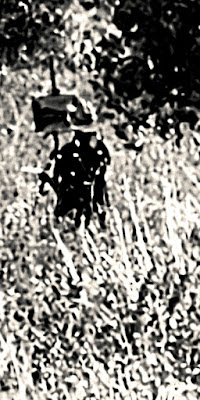I have the frequent need to dig out old cameras from my collection and see how we still, together, can capture a moment.
In the past weeks I have been playing with a late 1940s Praktica FX3 that I have had for many decades. It is a sweet camera if you have time to frame, focus, and figure out why the pictures go from left to right in the e waist level view finder… Yes, it is a 35mm waist level viewfinder camera with some serious sophistication. One of them is that it takes M42 mount lenses and has an internal, albeit obscure, switch to actually use semi-automatic lenses from the 1950s and 1960. So, instead of the cumbersome pre-set lenses, I like to use Honeywell Pentax lenses that are truly magnificent.
So, here is my FX3 with a 135mm on it and a 50mm Pentax Takumar lenses:
As a collector and a user, cameras with a historic background have a special meaning. This Praktica was made in Germany during WWII when Germany was under Soviet invasion. Here is the encryption:
I have been keeping this camera and lenses in my car in case I see something worth of street photography. Indeed, a few days ago I was parked my car in a state park to walk my dog and saw painters practicing the lovely tradition that impressionists like Monet made so popular – the joy of taking your easel out to the field and capturing landscapes.
So, the first picture I took is at the outset of this page. The film is ASA 100 so I do have some latitude with the lagging speeds of the camera:
Then I saw another painter perhaps 100 meters away. Here is the capture with the 50 mm f1.8 Takumar:
Of course I had plenty time to shift to the 135 mm lens for the following shot:
When I developed and printed these shots, I could not resist thinking about the Impressionists’ influence on framing this shot. Sure, it is amateurish, and it is influenced by the digital scanning of a film-based print, but still it does have that feel of the “plein air” painting that many artists dream to have the time to practice.
Here is the digitally ultra enlarged crop showing the painter and easel:
So, a 65 year old camera and Impressionistic themes – what can be better when the original goal was to take a 100 pound Akita for a walk on Halloween eve!
October 31, 2020
© Vahé A. Kazandjian, 2020
PS/ I got an email from a viewer who asked how the 35mm waist level viewfinder compares to the medium format viewfinders. It is a great question since given the size of the negative, medium format camera waist level viewfinders are larger, hence easier to frame and focus.
But the 35mm ones can be very bright and with some practice as easy to use as their medium format counterparts.
Here is a comparison between my Praktica FX3 and the venerable 1948 Rolleiflex Twin Lens Reflex camera.
And their viewfinders
Sure, the 35mm has a smaller viewfinder but I like the brightness of it.












